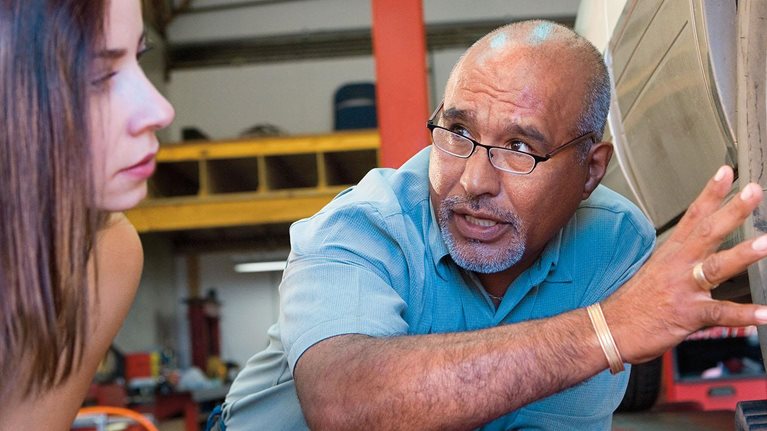Rick DeLappe joined the National Park Service in 1989 and has held frontline and management roles throughout his career with US parks. For the past three years he has served as project manager for Recreation.gov, an interagency reservation website and information-sharing system focused on helping citizens plan national and local park vacations. He recently spoke with McKinsey’s Kristin Allstadt and David Malfara to discuss modernizing the experience for users of the website and data services.
Stay current on your favorite topics
McKinsey: What challenges do you face in trying to innovate the digital experience on Recreation.gov?
Rick DeLappe: Our platform was designed in the late 1990s and it’s remained relatively static. It’s great at delivering as a reservation system, but we’ve been collecting a long list of changes we would like to make. For example, we’d like to collect more feedback on the user experience on a regular basis and be in a position to respond to it by quickly making enhancements or changes in an agile environment with our developers. I think we’ve been successful to some extent because we maintain a continuous effort to update and improve the site and our capabilities, but at the moment we are operating with some serious constraints. Soon, I anticipate a whole new way of operating that will help us deliver a new level of improved experience.
McKinsey: How do you aim to escape these constraints?
Rick DeLappe: We started by working with the US Digital Service, which created a digital playbook for buying IT. We basically incorporated all of their thoughts into our draft requirements as a starting point. We wanted to begin with the end user in mind—to stop building things we think they wanted and start building and designing based on user preferences. Unlike most federal requests for proposals (RFPs) in which everything is secret until it is released, we thought “Why not just let everyone see it?” So, once we had the first draft, we released it to the public for feedback. We posted the RFP on FedBizOpps.gov and started taking responses, and immediately end users and those who use our database started to chime in. They told us that we were way off on data sharing, that we needed better end-user capabilities, and so on. In addition to the online RFP comments, we had at least 11 different touchpoints with both the private sector and the general public through industry days. We took all of that feedback and incorporated it into the RFP we have today. This lengthy feedback process also helped to shape our aspiration for the experience—to provide a quality reservation system that allows people to plan their trips and make reservations.
McKinsey: How will the new contract let you operate differently?
Rick DeLappe: It will be agile from day one. We want to operate in scrum teams that are dedicated to enhancing the end-user experience and working on it every day. We don’t want to be in the position where our changes resemble a waterfall—giving a contractor an outpouring of requirements, and then sending the contractor away to execute. We want to be actively engaging with the end user, collecting feedback, and then working in close proximity to execute and iterate on designs quickly.
McKinsey: You’ve been working to innovate the Reservation Information Database (RIDB), too.
Rick DeLappe: The RIDB, which includes a searchable application to access federal recreation data, had been static for a long time. For years you were only able to retrieve the information as a single XML download with every single record—nearly 100,000 of them. So we knew it was not a good user experience for the internal customers and third parties who wanted to use the information.
We went through a pretty intensive and innovative process to design an application program interface (API) for the database. Similar to the RFP, we started the whole process with feedback. We reached out to third parties that were using, or wanted to use, the database to understand their needs and how they wanted to use the data. We started documentation on GitHub11. GitHub is a web-based version-control repository and Internet-hosting service. and pulling in folks from the US General Services Administration’s 18F team,22. 18F is a digital-services agency, housed within the General Services Administration, which helps federal agencies build, buy, and share modern digital services to improve the user experience. and once we felt we had a good sense of the requirements, we built and released the API. Shortly thereafter, we hosted a hackathon at the Department of the Interior (DOI). We had around 80 people attend. In two days we completed 11 new projects, and we started consolidating feedback on GitHub so we could collect and incorporate the feedback.
McKinsey: How did the hackathon help you think differently?
Rick DeLappe: The hackathon gave us some great exposure to potential collaborators in the industry. While I was there I showed sample reservation data to a few individuals from the National Transportation Systems Center (Volpe) and a few hospitality consulting firms to get an understanding of what more we could do with it. They were pretty impressed with what we had available, so we pulled all available records, more than 20 million reservations, and brought that to a Silicon-Valley-meets-DC hackathon with the DOI. The prompt response from the DOI was to get recreation data into the hands of underserved audiences.
We had two teams at the hack. The first used the geographical data in our reservation database to find specific areas of the country with low participation in reservation services. For instance, they found one section of Detroit where no one had ever made a reservation with us. That’s a huge insight for something like the “Every Kid in a Park” program,33. Every Kid in a Park, everykidinapark.gov. because now they can use our information as a way to specifically target locations with marketing efforts to encourage use of our website and to get more kids outdoors.
The second team built a chat bot called Great Outdoors Bot, or “GO Bot” for short, that makes parks and recreation recommendations based on what you ask it within the new Facebook messenger app. For instance, you can pull it up on your phone and say, “I’m looking for trailheads nearby,” and it will make recommendations and will even help you find the best sources of public transportation to get you to the location. I saw a new prototype at the White House Open Data Innovation Summit where the team did a full presentation.

The CEO guide to customer experience
The whole process has been fantastic. It all started with us knowing we could do more with the data we have and asking for some feedback. The more we ask for feedback, the more gaps we expose and the better our service offering becomes. We are always looking for ways to get better.
McKinsey: What advice would you offer other agencies that are taking on this type of challenge?
Rick DeLappe: My biggest advice is to build your services for what the end user wants. I think we spend too much time building things we think they will want, and sometimes in the public sector we get scared of feedback, but I think we should welcome the feedback because it just helps us to get better.


